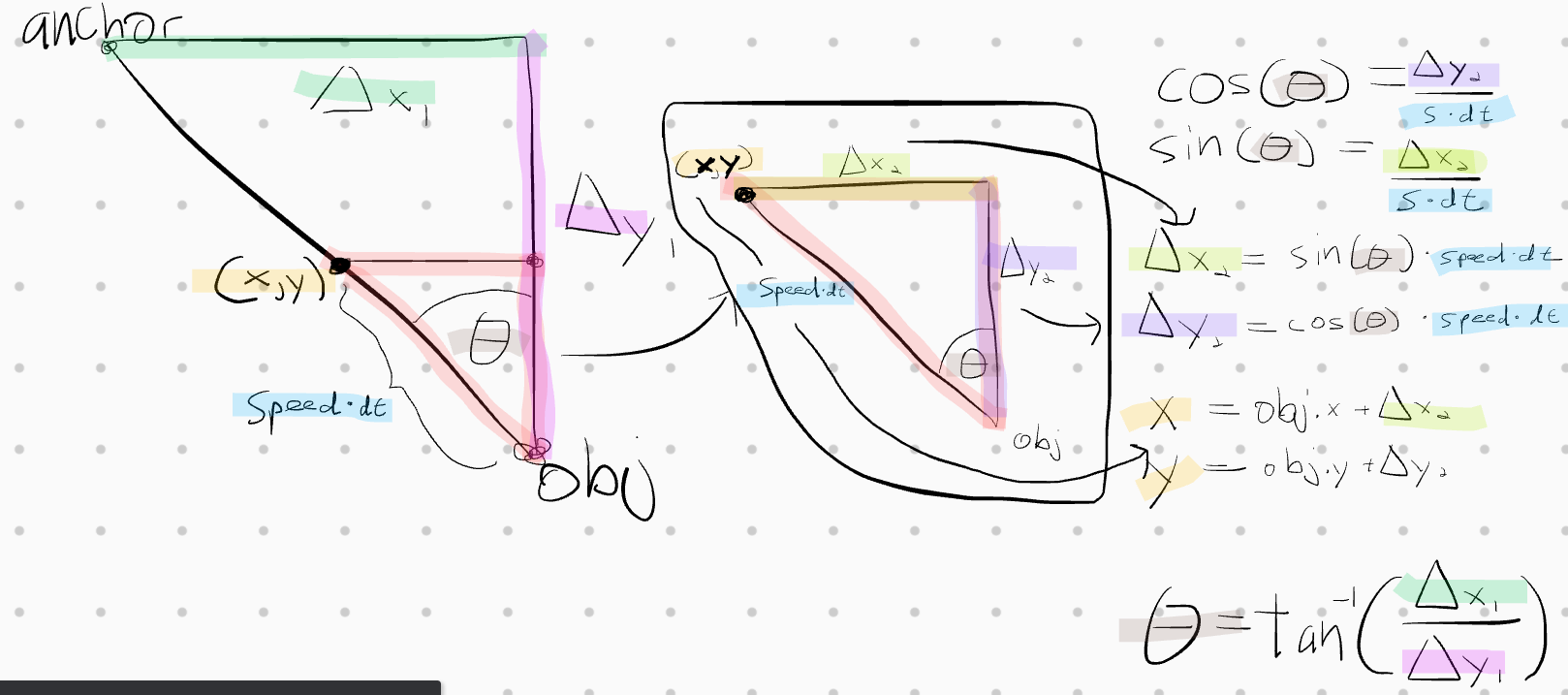To start, I'm not working with an engine and am looking for some help fixing the math behind the function I created.
Say we have anchor, obj, speed, dt, and terminationDist ; function anchorPull will theoretically pull obj towards anchor at a rate of speed pixels per second until the distance from anchor to obj is less than terminationDist. My implementation is as follows:
def anchorPull(anchor, obj, speed, dt, termDist = 10): if dist(anchor, obj) > termDist: deltaX1 = obj.x - anchor.x deltaY1 = obj.y - anchor.y theta = degrees(atan(deltaX1/deltaY1)) deltaX2 = sin(theta) * speed * dt deltaY2 = cos(theta) * speed * dt obj.x += deltaX2 obj.y += deltaY2 The problem is, at low framerates (a high dt) obj wont go all the way to anchor: 
obj will also stochastically move around when anchor isn't stationary.
Any help would be great, thanks!

